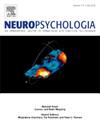类别偏倚斑块环绕核心域一般区域在人类外侧前额皮质
IF 2
3区 心理学
Q3 BEHAVIORAL SCIENCES
引用次数: 0
摘要
人类外侧前额叶皮层(PFC)的精细功能组织仍然知之甚少。先前的fMRI研究描述了在不同的认知要求任务中共同激活的焦域一般或多需求(MD) PFC区域。虽然有一些证据表明,在人类和非人类灵长类动物的PFC中存在类别选择(面部和场景)斑块,但尚未对这些斑块进行系统评估。最近的精确fMRI研究也发现了感觉偏倚的PFC斑块邻近MD区域。为了研究这种地形排列是否延伸到其他领域,我们利用人类连接组计划(HCP)的高分辨率多模态MRI方法分析了两个独立的fMRI数据集(n = 449和n = 37)。这两个数据集都包括认知控制任务和跨越不同类别的刺激:面孔、地点、工具和身体部位。将每个刺激类别与其他刺激类别进行对比,发现位于核心MD区域附近的局灶交叉活动斑块。脸和位置的结果是稳健的,在不同的执行任务、实验设计(块和事件相关)和单个受试者水平上都是重复的。在一个数据集中,参与者同时执行类别和感官任务,位置补丁与视觉偏差区域重叠,而面部补丁位于视觉和听觉偏差之间。我们的研究结果描绘了PFC细粒度功能组织的精细视图,揭示了交叉域特异性和域通用电路的重复motif。这种组织为认知控制、皮质特化和发育模型提供了新的约束。本文章由计算机程序翻译,如有差异,请以英文原文为准。
Category-biased patches encircle core domain-general regions in the human lateral prefrontal cortex
The fine-grained functional organization of the human lateral prefrontal cortex (PFC) remains poorly understood. Previous fMRI studies delineated focal domain-general, or multiple-demand (MD), PFC areas that co-activate during diverse cognitively demanding tasks. While there is some evidence for category-selective (face and scene) patches, in human and non-human primate PFC, these have not been systematically assessed. Recent precision fMRI studies have also revealed sensory-biased PFC patches adjacent to MD regions. To investigate if this topographic arrangement extends to other domains, we analyzed two independent fMRI datasets (n = 449 and n = 37) utilizing the high-resolution multimodal MRI approaches of the Human Connectome Project (HCP). Both datasets included cognitive control tasks and stimuli spanning different categories: faces, places, tools and body parts. Contrasting each stimulus category against the remaining ones revealed focal interdigitated patches of activity located adjacent to core MD regions. The face and place results were robust, replicating across different executive tasks, experimental designs (block and event-related) and at the single subject level. In one dataset, where participants performed both category and sensory tasks, place patches overlapped with visually biased regions, while face patches were positioned between visual and auditory biases. Our results paint a refined view of the fine-grained functional organization of the PFC, revealing a recurring motif of interdigitated domain-specific and domain-general circuits. This organization offers new constraints for models of cognitive control, cortical specialization and development.
求助全文
通过发布文献求助,成功后即可免费获取论文全文。
去求助
来源期刊

Neuropsychologia
医学-行为科学
CiteScore
5.10
自引率
3.80%
发文量
228
审稿时长
4 months
期刊介绍:
Neuropsychologia is an international interdisciplinary journal devoted to experimental and theoretical contributions that advance understanding of human cognition and behavior from a neuroscience perspective. The journal will consider for publication studies that link brain function with cognitive processes, including attention and awareness, action and motor control, executive functions and cognitive control, memory, language, and emotion and social cognition.
 求助内容:
求助内容: 应助结果提醒方式:
应助结果提醒方式:


